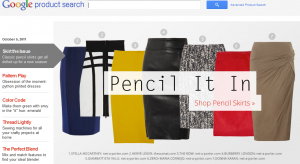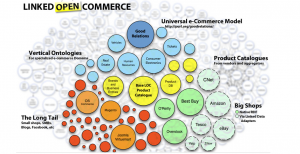How To Leverage Structured Markup To Create E-Commerce Web Portals
I’m sure most of you are familiar with the definition of a Web portal. Wikipedia defines it as a point of access to the Web with information from diverse sources represented in a unified way. Standard Web portals are those we are all familiar with, such as Google, Bing or Yahoo; however, there are also […]
I’m sure most of you are familiar with the definition of a Web portal. Wikipedia defines it as a point of access to the Web with information from diverse sources represented in a unified way.
Standard Web portals are those we are all familiar with, such as Google, Bing or Yahoo; however, there are also portals geared for specific verticals such as e-commerce.
The semantic Web is a specific example of how Google is leveraging structured product markup to create Google Product Search, a shopping or “e-commerce Web portal.” The same is true of Bing Shopping and many others.

Product data in the form of structured markup can be submitted to Google Merchant in place of a product feed. Product information can be provided on your HTML page in the form of GoodRelations RDFa markup, HProduct markup or the new standard adopted by all three search engines, Schema.org Microdata, specifically Schema.org for products, whose vocabulary supports both Microdata and RDFa as a syntax.
As noted in the Google Webmaster Central Blog, rich snippets can help users determine whether a particular webpage has the information they want more quickly. Google has rich snippets for shopping, recipes, reviews, video, events, music and applications. Below is an example of a rich snippet for a mobile application.
E-Commerce Portals
Google (shopping), Bing and LinkedOpenCommerce are examples of e-commerce portals. They leverage the semantic Web — or Web of data — by consuming the structured markup on webpages and then making it available to users via their portals.
All major e-tailers such as eBay, Overstock and Target are e-commerce portals, but they are not necessarily leveraging the semantic Web.
What Structured Markup Means To E-Tailers
Why is structured markup important for e-tailers? There is clearly the obvious rich snippet effect of enhanced displays on the Google SERP pages, yielding a 15 percent or higher CTR, among other benefits.
Rich snippets can help you:
- Attract potential buyers while they are searching for items to buy on e-commerce portals
- Submit product listings at no cost
However, visibility — or even presence — within a Web portal designed to leverage the existence and proliferation of this product markup is another important benefit. You can control your product information and maintain the accuracy and freshness of your product offerings so your customers can easily find the relevant, current items they’re looking for.
Placing product markup on your webpages is an example of you as a “producer of content information.” Google, Bing, Yahoo and other search engines are examples of “consumers” of this information. The advantage of being a producer of information is nicely explained by Google.
Semantic Web Indexes & E-Commerce Portals
Sindice is an example of a semantic Web index that crawls the Web consuming pages with structured semantic markup. Why is this relevant to e-tailers? Because they can get greater exposure in e-commerce Web portals.
GoodRelations (RDFa) and other product markup can also be submitted to e-commerce portals like LinkedOpenCommerce, which leverages the Web of data for e-commerce, and can be accessed by many novel apps and recommendation systems. Many others use Google Merchant as an API.
Any e-tailer of size will clearly want to make its site an e-commerce Web portal, and in many cases, with specific e-commerce verticals in mind (such as clothing, automotive, etc.).
In fact, Overstock recently announced it expects to launch a consumer portal in 2012. The semantic Web and structured markup can accelerate and facilitate e-tailers’ ability to do this.
For the smaller merchant trying to sell its products, the market reach can become broader by adding structured markup, as many crawlers consuming semantic product information will pick it up and utilize it.
Structured markup makes these products more “findable” by users within the e-commerce portals. The cost of obtaining this additional visibility is simply that of adding and optimizing the relevant structured markup to their webpages, i.e., data such as price, availability, location, etc.
Consumers are looking for relevant, current items. And these items become far more visible within search or apps on e-commerce portals. Whereas, these items may get lost in the greater spectrum of generic search portals, the default search engines like Google, Bing and Yahoo.
Contributing authors are invited to create content for Search Engine Land and are chosen for their expertise and contribution to the search community. Our contributors work under the oversight of the editorial staff and contributions are checked for quality and relevance to our readers. The opinions they express are their own.
Related stories


